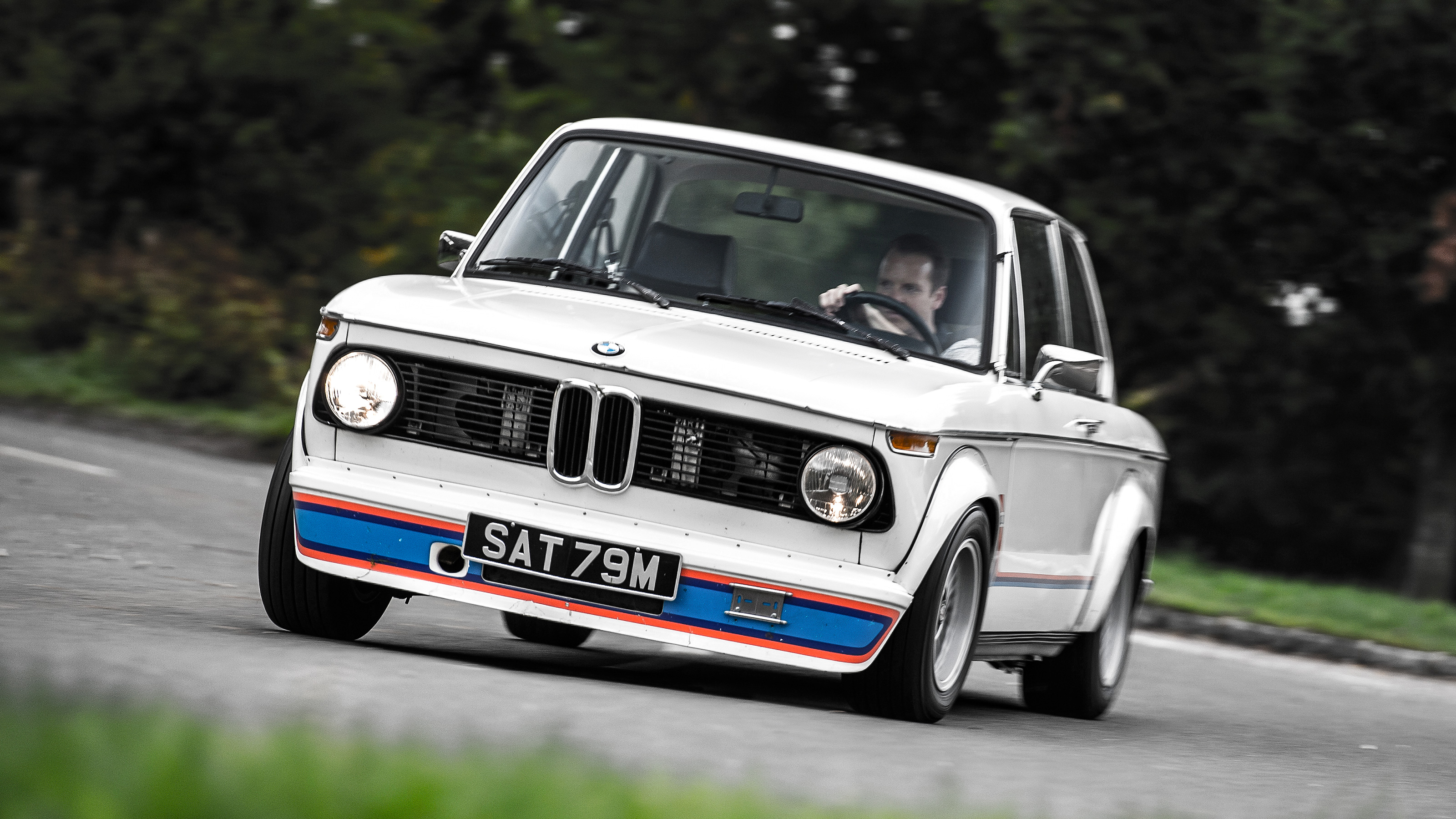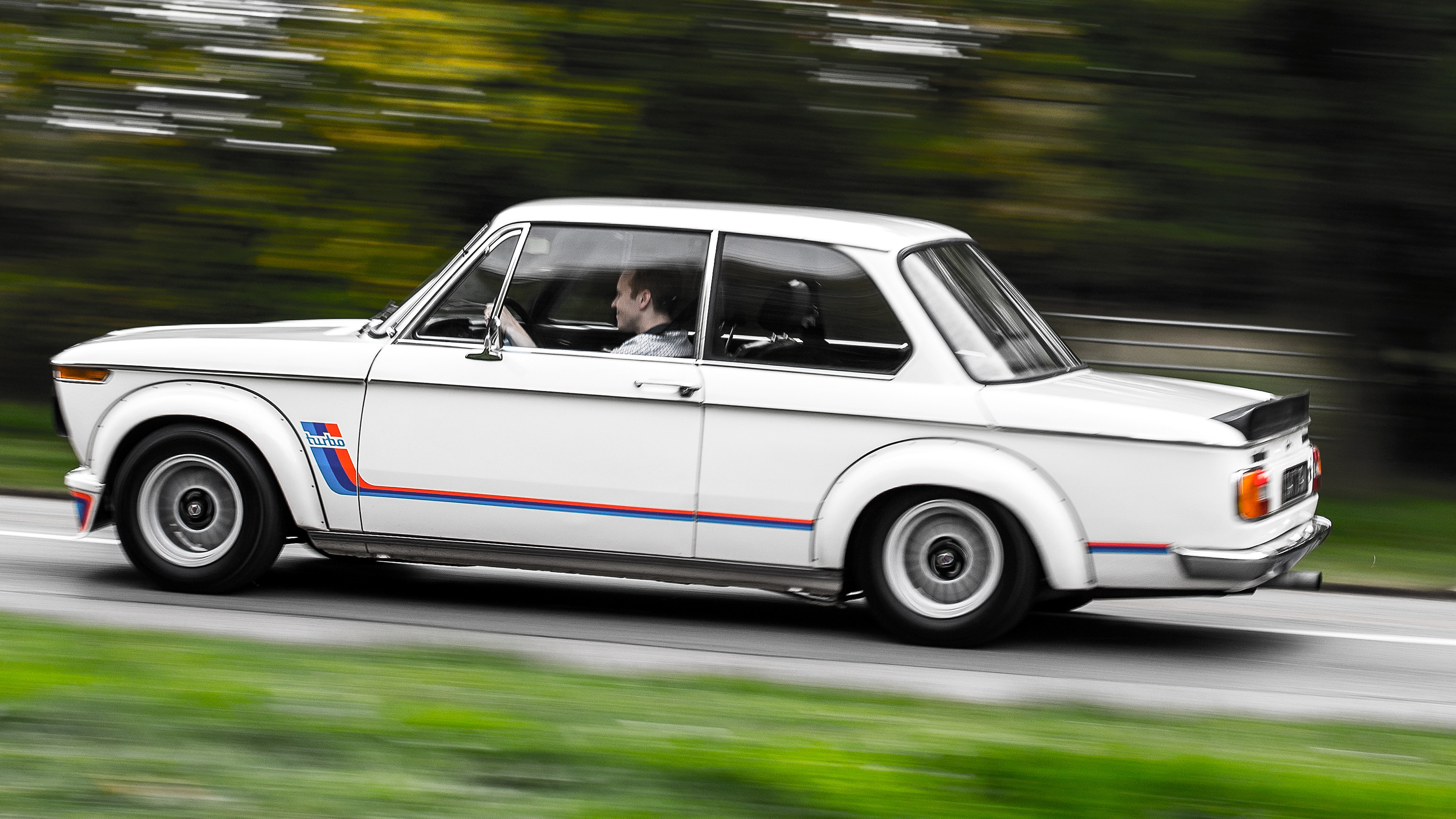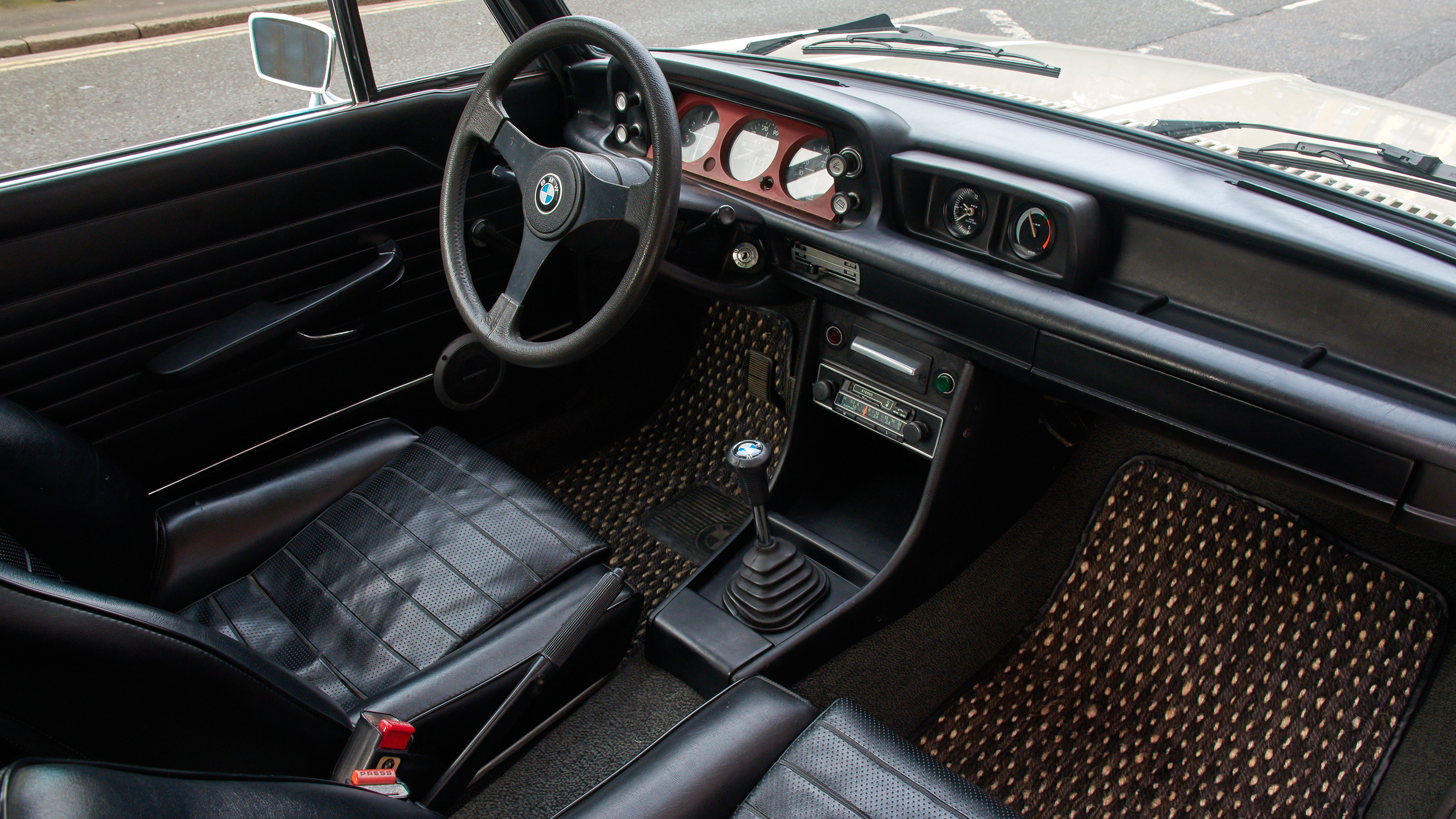
BMW 2002 Turbo review
Driving
What is it like to drive?
Opening the big clamshell front-hinged bonnet is an event, even if what you find is a bit of a visual let-down. Other sporty cars of the era had an array of fat carburettors. Not here: the mechanical injection is unspectacular to the eye. And of the famous turbo there is no sign: the big snail is buried under the exhaust manifold at sump height, connected to the inlet side by a simple anaconda of a pipe.
The compression ratio had to be lowered to 6.9 to one because there was no wastegate to relieve pressure. Meaning when not boosted it's a very leisurely engine indeed. It reacts promptly to the accelerator, but meekly.
Keep flooring it. A double helping of nothing much, until sometime around 4,000rpm. Then the boost gauge goes red and the hissing starts. But they won't be what get your attention.
It's the arrival of much forward thrust, which feeds off itself: more power gets more revs gets more power, at least to 6,000. Come off the throttle, and it loses everything, so even at 4,500 or so, there's still two or three seconds of lag when you come back on.
To be clear, modern turbo hot hatches, even the mildest, would see this off. What makes the 2002 Turbo so fascinating is the fact you always need to be thinking so far ahead. Get it right and it's a joy.
Gearing is short, so you're shifting often, always calculating what's needed to get either the placid engine or the hairy one. At motorway speed the engine's spinning fast and pretty loudly, but never coarsely.
No great worries about stopping, as it pulls up straight and true. That's in the dry. In the wet, remember how to drive a pre-ABS car.
And the suspension?
Cars of this era were amazingly supple. Like a modern base-model VW Polo. Their narrow tyres didn't mind a bit of roll angle, so there's some of that too. Float and other queasy body motions are decently damped though, so it all feels nicely under control. The Turbo got a wider track and bigger brakes than the 2002 tii but isn't much stiffer.
Because it's so small and light and supple, it just loves small, testing roads. It sniffs the bends and dances through. The steering's unpowered and that's an advantage beyond 5mph because it all feels wonderfully real.
But be smooth, especially in the wet. The semi-trailing arms in the rear suspension will let things get pear-shaped with little warning. By that point lifting off doesn't help because it upsets the rear camber angle even more (later E21 and E30 3-series had the same, but with grippier wider tyres so it all happened at higher speed and even more suddenly).
When road-testing a classic you always have to figure out which characteristics are period-correct and which are just signs of ageing components. The deadahead steering play is as-new. The Germans used worm steering boxes instead of racks for many more years. Feeble headlamps are intrinsic too. The gearbox – first is nearest you, with reverse ahead of it, and second to fifth are in an H-pattern – is sticky into first and that's a particular problem with this car.
Not a perfect experience then?
What's perfection? This is about involvement, and all without smashing speed limits. We drove it for hours and hours and only later realised the radio-cassette was dead. Catching the boost just when you wanted is like catching the seventh wave.
Featured

Trending this week
- Car Review
BMW 1 Series
- Top Gear's Top 9
Nine dreadful bits of 'homeware' made by carmakers






